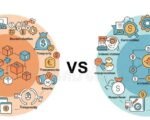Malaysia’s digital payments surge past $90 billion, transforming how people spend, save, and send money — but the question now is whether the country’s traditional banks can keep up with fintech challengers and shifting consumer habits.
A Nation That Swipes Before It Signs
Walk down a Kuala Lumpur street after sunset, and the glow from food stalls isn’t just from the grill — it’s from QR codes. Everyone’s scanning. From hawkers to high-end stores, cash is fading faster than most expected. Yet, banks? Some are still stuck in 2015.
By 2025, Malaysia’s card payments are expected to hit MYR422.4 billion ($92.6 billion), according to central bank data. That’s up from MYR387 billion last year. Credit and charge cards dominate, making up nearly 60% of total spend. Contactless is now mainstream, with roughly 63% of Malaysians using tap-to-pay.
The numbers tell one story — consumers have gone digital. But behind that progress lies an anxious banking sector trying to modernize legacy systems before it’s too late.

Two Malaysias in One Wallet
Cash still clings to daily life in surprising corners. A market vendor in Ipoh prefers notes because she doesn’t trust the apps. A young professional in Petaling Jaya hasn’t carried cash for a year. Both are right, in their own way.
That split defines Malaysia’s payments scene. Even as fintech firms sprint ahead with e-wallets and instant onboarding, cash still accounts for around half of everyday purchases. It’s not stubbornness; it’s infrastructure and comfort. Some merchants still avoid digital fees, and older customers simply like the feel of money in hand.
This coexistence — one half cloud, one half coin — keeps the market in flux. Banks are stuck juggling two realities at once: providing sleek, app-based services for digital natives, while maintaining teller counters for those who still prefer the queue.
The Southeast Asian Ripple Effect
Visa’s recent Consumer Payment Attitudes study paints a clear regional picture. Six in ten Southeast Asians now prefer cashless transactions. Even more telling, over 70% have gone an entire week without touching cash, experimenting with digital alternatives.
Cards remain the top choice for payments, largely due to wide merchant acceptance. But digital wallets are catching up, often topping up directly from those same cards — a strange symbiosis that keeps traditional banking relevant even as fintechs nibble at the edges.
One payments analyst in Singapore put it bluntly: “Cards are the bridge. Wallets are the future.” Malaysia, sitting between mature and emerging markets, is the testing ground for that bridge.
Fintechs Aren’t Waiting for Anyone
Malaysia’s fintech startups aren’t playing defense — they’re rewriting the rulebook. GrabPay, Touch ‘n Go eWallet, and Boost are household names, embedded in everything from grocery payments to government subsidies. The speed is dizzying.
Some fintech players can issue virtual cards in under three minutes. Banks, burdened by compliance layers and legacy systems, can take days.
-
Fintechs focus on speed and UX, skipping branch networks entirely.
-
Traditional banks focus on trust and compliance — but at a cost.
Bank Negara Malaysia, the country’s central bank, has also loosened regulations to welcome new digital-only banks. Five licenses have already been issued, setting the stage for a new era of competition.
Younger Malaysians, meanwhile, are growing up mobile-first. Many use e-wallets long before they ever touch a debit card. It’s not rebellion — it’s convenience.
Where the Money Actually Flows
Let’s put some structure on the numbers. Here’s a simplified breakdown of Malaysia’s consumer payment market in 2025 based on available industry data:
| Payment Method | Estimated Share (%) | Key Driver |
|---|---|---|
| Credit & Charge Cards | 58% | Rewards, merchant acceptance |
| Debit Cards | 25% | Bank-linked wallets |
| E-Wallets & Super Apps | 12% | Mobile-first usage |
| Cash | 5% | Rural and informal markets |
The growth of e-wallets is striking. Just three years ago, their share was below 5%. The COVID-19 pandemic accelerated adoption, but what kept it going is habit — people realized they didn’t need to fumble for change anymore.
Still, card infrastructure is the backbone of this ecosystem. Many wallets rely on bank-issued cards for top-ups or balance transfers. So even as fintechs surge, they’re tethered — for now — to the traditional system they aim to disrupt.
Banks Have the Money, Fintechs Have the Momentum
Ask Malaysian consumers where they trust their salaries to land, and most still name Maybank or CIMB. That trust is deep-rooted. But ask them which app they use for quick transfers or bill payments, and the answers spread wide.
Banks are trying to close that gap. Maybank launched MAE, its digital-first app that looks more like GrabPay than a bank portal. CIMB introduced Octo, promising faster onboarding and better personalization. The problem? Innovation at scale takes time — something fintechs have in short supply, and banks have too much of.
In an ironic twist, banks now partner with the very fintechs that once threatened them. Some provide APIs to allow digital wallets to connect directly with their systems, while others invest outright in startups to stay close to the innovation pulse.
But collaboration doesn’t always equal control. Consumers, after all, don’t care who owns the rails — they just want speed, ease, and trust.
The Race Isn’t Over — It’s Just Moving Online
Malaysia’s payments market will likely surpass $100 billion by 2026 if current growth holds. That’s a milestone — but also a pressure point. Because once every transaction becomes digital, loyalty becomes fragile. One tap, one swipe, one scan — and a customer can switch brands.
That’s the real challenge for banks. It’s not just technology; it’s culture. It’s whether an institution built on paperwork can think like a startup.
As one Kuala Lumpur fintech founder told Bloomberg, “Legacy isn’t about systems, it’s about mindset. The future’s already cashless — it’s just waiting for the banks to notice.”








